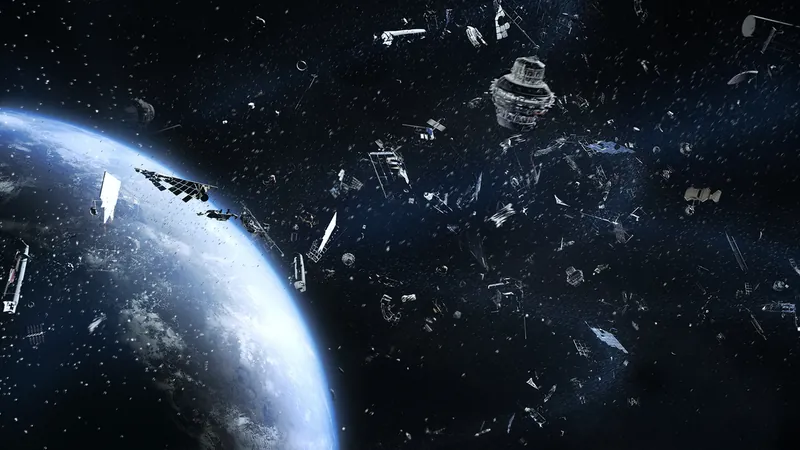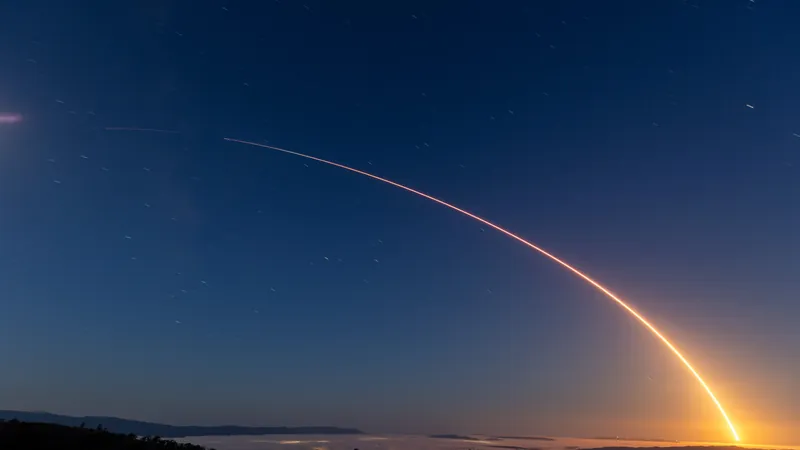
Urgent Call to Tame Space Junk: ESA Report Warns of Imminent Orbital Crisis
2025-04-12
Author: Arjun
The cosmos surrounding our planet is at a critical tipping point, warns a new report from the European Space Agency (ESA). If we don’t act fast, key orbits could become unusable due to the overwhelming clutter of space debris.
Published on April 1, this eye-opening report reveals that, while new standards to mitigate space debris are gaining traction, they fall woefully short in combating the existing debris problem. This could trigger a catastrophic chain reaction known as "Kessler syndrome," where debris collides and creates even more hazardous fragments.
A Million Reasons to Worry
ESA highlights a staggering reality: over 1.2 million pieces of space debris larger than one centimeter—large enough to cause severe damage—are currently orbiting Earth, with more than 50,000 of those being larger than 10 centimeters. A collision with even a pea-sized object could cripple vital satellite systems, while anything above 10 cm could obliterate a spacecraft, as demonstrated by a tiny fragment that left a noticeable chip in the International Space Station's windows back in 2016.
Increasing Traffic Piling Up Debris
The report also sheds light on alarming trends in space traffic that amplify the debris dilemma. With the highest number of launches in history and an increasing prevalence of small satellite constellations, the potential for additional debris is soaring just as we struggle to manage the existing junk.
While some debris eventually burns up upon reentering the atmosphere or crashes back to Earth, this isn’t enough to offset the burgeoning issue. ESA emphasizes that intact satellites and rocket bodies are re-entering our atmosphere over three times each day, yet the flow of new debris continues to outpace the rate of removal.
A Vicious Cycle of Collision
Space debris creates a self-replicating hazard; every collision generates more shards that can further wreak havoc. In the vastness of space, there’s little to slow down or stop these fragments, which persist until they collide again or drift into the atmosphere.
The stakes have never been higher. To safeguard our access to space and prevent an orbital catastrophe, urgent action is needed. The ESA report serves as a clarion call: we must prioritize cleaning up our cosmic backyard before it's too late.



 Brasil (PT)
Brasil (PT)
 Canada (EN)
Canada (EN)
 Chile (ES)
Chile (ES)
 Česko (CS)
Česko (CS)
 대한민국 (KO)
대한민국 (KO)
 España (ES)
España (ES)
 France (FR)
France (FR)
 Hong Kong (EN)
Hong Kong (EN)
 Italia (IT)
Italia (IT)
 日本 (JA)
日本 (JA)
 Magyarország (HU)
Magyarország (HU)
 Norge (NO)
Norge (NO)
 Polska (PL)
Polska (PL)
 Schweiz (DE)
Schweiz (DE)
 Singapore (EN)
Singapore (EN)
 Sverige (SV)
Sverige (SV)
 Suomi (FI)
Suomi (FI)
 Türkiye (TR)
Türkiye (TR)
 الإمارات العربية المتحدة (AR)
الإمارات العربية المتحدة (AR)